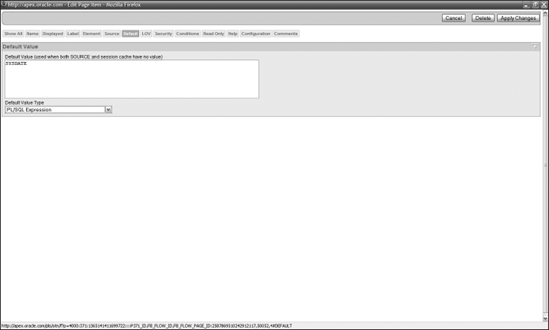3.3. Default Values
Your task is to create applications for your users, but those applications should also be easy to use for your clients. One of the ways you can help your users is to make it possible for them to skip data entry for any fields that will usually have the same value. You can specify a default value for these situations.
Try It Out: Default ValuesA good candidate for a default value in the sample application is the ORDER_TIMESTAMP column, which would normally be the date the order is entered.
Rather than drill down to the detail page, you can use the Edit Link to go directly to the field from the runtime environment.
SYSDATE is a function you can use with Oracle SQL or PL/SQL to return the current system date.
While you are making changes for this ... |
Get Beginning Oracle® Application Express now with the O’Reilly learning platform.
O’Reilly members experience books, live events, courses curated by job role, and more from O’Reilly and nearly 200 top publishers.


